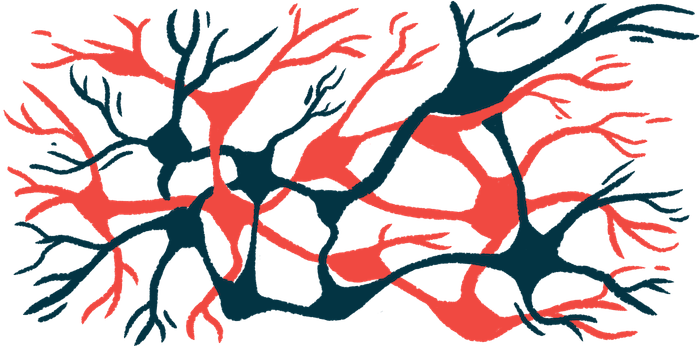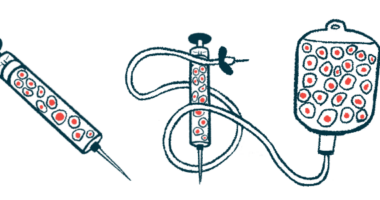Method generates dopaminergic neurons lost in Parkinson’s disease
Researchers used antibody to activate receptor in pluripotent stem cells

Researchers in Canada have developed a new method to generate functional dopaminergic neurons, the dopamine-producing nerve cells lost in Parkinson’s disease, from human pluripotent stem cells (hPSC).
The scientists used an antibody to selectively activate FZD5, a receptor, in the stem cells, which stimulated a specific molecular signaling pathway involved in generating new neurons from the cells. Human pluripotent stem cells can generate nearly all cell types, including neurons.
The method provides a more precise and controlled activation of this pathway, called Wnt, and may improve the differentiation of stem cells into dopaminergic neurons in the brain regions affected by Parkinson’s.
“We used synthetic antibodies that we had previously developed to target the Wnt signaling pathway,” Stephane Angers, principal investigator on the study and director of the Donnelly Centre for Cellular and Molecular Biology at the University of Toronto, said in a press release. “This activation method has not been explored before.”
The study, “Exploiting spatiotemporal regulation of FZD5 during neural patterning for efficient ventral midbrain specification,” was published in Development.
Parkinson’s is caused by the dysfunction and death of dopaminergic neurons in the nigrostriatal pathway of the midbrain, a region involved in motor control. Dopamine is a major brain chemical messenger.
Replacing lost dopaminergic neurons may be effective for treating Parkinson’s disease. Most studies have relied on an inhibitor of the GSK3 enzyme, whose activity is altered in various diseases, including Parkinson’s, to activate the Wnt pathway. This method affects other signaling pathways, and may cause unintended effects and activate off-target cells, however.
The Wnt pathway is a group of signal transduction pathways involved in various cellular processes, including cell growth and development, tissue maintenance, and cell communication. Wnt signaling has been implicated in midbrain dopaminergic neurons’ development and function, and some studies suggest activating Wnt signaling may have neuroprotective effects or promote dopaminergic neurons to regenerate.
Generating dopaminergic neurons from stem cells
Here, researchers used established protocols to differentiate hPSCs into neural stem cells, or progenitor cells, from different brain regions. Then, using antibodies specific to FZD receptors, they identified the FZD5 receptor as being highly active in neural stem cells that defined the midbrain region.
The FZD5 receptor is a protein on the surface of cells and part of the Wnt signaling pathway. Activating it can stimulate the production of new neural cells in the midbrain that closely resemble dopaminergic neurons.
The receptor levels were regulated by several genes, including the one that encodes OTX2, a protein involved in defining the pattern of neurons in the midbrain, an analysis showed. Based on the data, the researchers hypothesized that selectively activating FDZ5 using specific antibodies against this receptor would efficiently induce the neuronal pattern of the midbrain.
“We can selectively activate this pathway to direct stem cells in the midbrain to develop into neurons by targeting specific receptors in the pathway,” Angers said.
When the effect of activating FDZ5 receptors using a GSK3 inhibitor or a specific antibody were compared, both methods led to a similar differentiation of midbrain neural progenitor cells, as assessed by the activity levels of specific genes.
The researchers also confirmed that the progenitor cells obtained from activating the FDZ5 receptor could differentiate into dopaminergic neurons by evaluating the activity of genes specific to these neurons such as tyrosine hydroxylase, an enzyme critical for dopamine production. They also observed that the obtained neurons had an activity profile consistent with dopaminergic neurons.
“We developed an efficient method for stimulating stem cell differentiation to produce neural cells in the midbrain,” said Andy Yang, first author of the study and PhD student at the Donnelly Centre. “Moreover, cells activated via the FZD5 receptor closely resemble dopaminergic neurons of natural origin.”
To see if the progenitor cells obtained using the new method could originate functional dopaminergic neurons in the brain, the researchers implanted the cells in a rat model of Parkinson’s disease that displayed locomotor impairment.
Three months after the implantation, the animals who received the progenitor cells recovered their locomotor function, which persisted up to 32 weeks, or about eight months.
“These data suggest that the [midbrain] progenitors derived from [the new] treatment give rise to bona fide [dopaminergic] neurons and are functional in vivo to efficiently rescue motor dysfunction,” the researchers wrote.
“Our next step would be to continue using rodent or other suitable models to compare the outcomes of activating the FZD5 receptor and inhibiting GSK3,” said Yang. “These experiments will confirm which method is more effective in improving symptoms of Parkinson’s disease ahead of clinical trials.”







